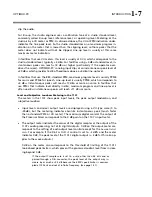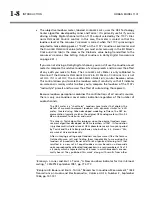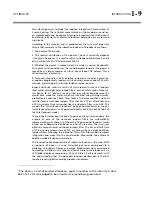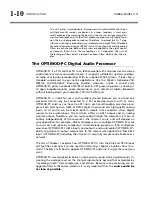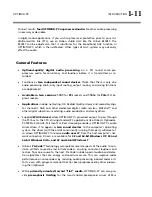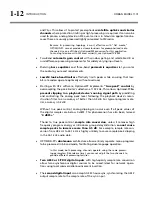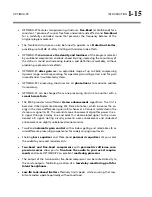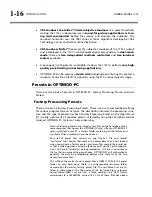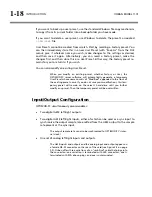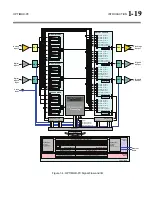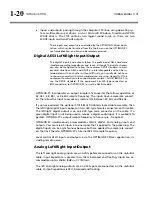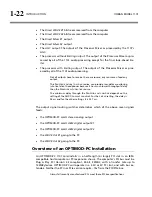
OPTIMOD-PC INTRODUCTION
1-21
The outputs are intended for monitoring. They can drive 600
Ω
or higher imped-
ances. However, they are AC-coupled with a –3dB frequency of approximately 1 Hz,
which is higher than the 0.15 Hz recommended by Orban to avoid low-frequency
overshoots (“bounce”) caused by phase shifts. Therefore, when you are using the
audio processing for peak control, such control will be noticeably poorer at the ana-
log outputs than at the AES3 or WAVE outputs, both of which exhibit very tight
peak control. Consequently, you should always use OPTIMOD-PC’s AES3 or WAVE
outputs to drive your transmission chain.
For a more detailed diagram of the “Processor” block, see
OPTIMOD-PC Digital Signal Processing Diagram
on page 3-11.
The Orban I/O Mixer
The I/O Mixer mixes and routes audio to and from the OPTIMOD-PC card.
(See Figure 1-4 on page 1-19 and
on page 1-24.) You
can open the Optimod PC Mixer from the Tools menu in the Orban Control applica-
tion.
Within the Optimod PC Mixer, there are three mixers: two “direct” mixers and one
“processor” mixer. The two Direct Mixers receive six inputs:
•
The
stereo analog input
on the DB-25 connector
•
Digital 1 Input
(AES3) on the DB-25 connector
•
Digital 2 Input
(AES3) on the DB-25 connector
•
WAVE In 1
and
WAVE In 2
(corresponding to the 1101’s two logical sound cards)
from the computer operating system’s internal mixing and routing
•
Processor Return
— the output of the 1101’s audio processor.
This is useful for EAS service where the EAS tones must be at a specified
level or percentage modulation (as specified by government regulation)
and thus should not be passed through the audio processor. Dedicate
one Direct Mixer for EAS. Connect the output of the EAS tone generator
to one OPTIMOD-PC input. Use the chosen Direct Mixer to mix the output
of the EAS tone generator with the processed audio, received from the
audio processor loopback input. Drive the transmission system with the
output of the chosen Direct Mixer.
To prevent an undesired feedback loop, the Processor Mixer receives all these out-
puts except for the processor loopback.
The Processor Mixer sends its output to the audio processing DSP on the OPTIMOD-
PC card.
The Direct Mixers send their outputs directly to the output routing switcher.
There are five outputs, each of which can receive the following seven possible
sources:
Summary of Contents for Optimod-PC 1101
Page 4: ......
Page 14: ......
Page 121: ...OPTIMOD PC OPERATION 3 1 Section 3 Operation Figure 3 1 The OPTIMOD PC Control Application...
Page 192: ...3 72 OPERATION ORBAN MODEL 1101...
Page 204: ......
Page 210: ......
Page 212: ...5 2 UNINSTALLATION ORBAN MODEL 1101...
Page 236: ......

